Hokitika Gorge

Beez Neez now Chy Whella
Big Bear and Pepe Millard
Mon 1 Sep 2014 22:47
|
Hokitika Gorge and Incident
Memorial
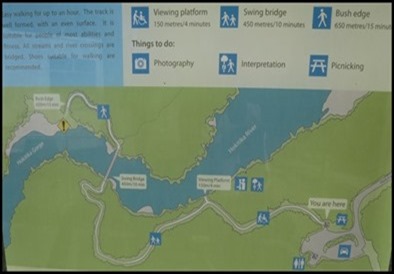 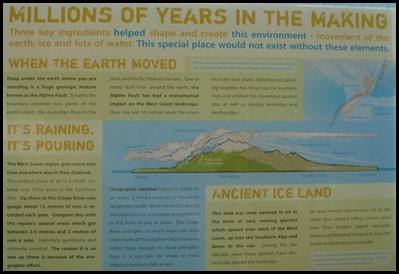 We left Hokitika and drove past many
farms on very flat, very green land. Several little bridges later we left the
tarmac, rose through a skinny gravel bit and parked Mabel at the top of a rise.
Here our information boards were very posh ‘glass’ or
something similar. The usual well maintained track was soon being
bimbled.
 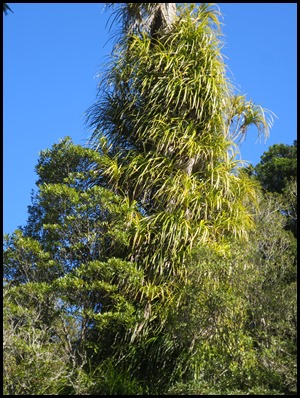 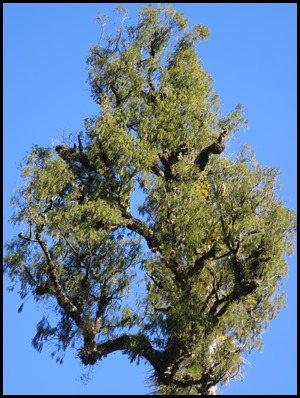 On our first corner Bear fell for a
tree. He stood admiring for some time. I’ve never seen a
tree so clothed in so many different bromeliads. I looked up
enthusiastically. Best call it Bear’s Tree
then............
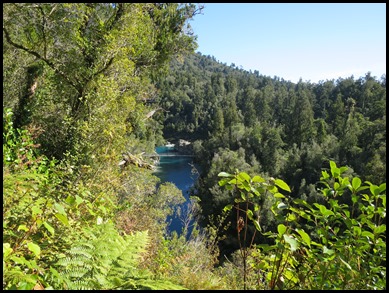 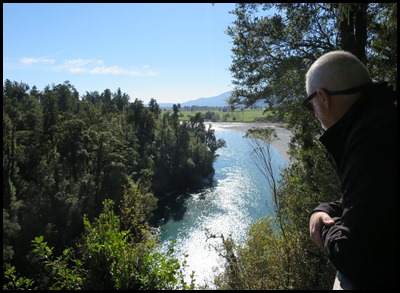 On the next corner we could just see
the swing bridge, to our right the Hokitika River.
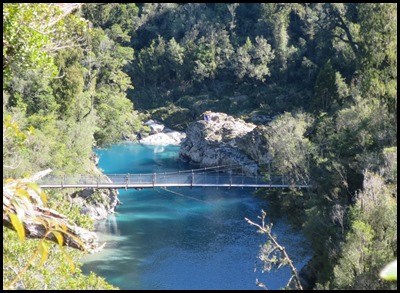 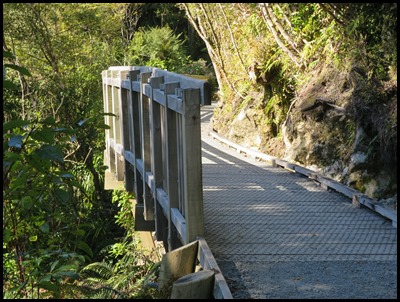 We moved closer to
the bridge. A particularly
fine piece of wood work around a particularly steep set of rocks, I think you
should take a picture of it. Yes dear, perhaps I should call it
Bear’s Bridge. What did you say. Nothing
dear.
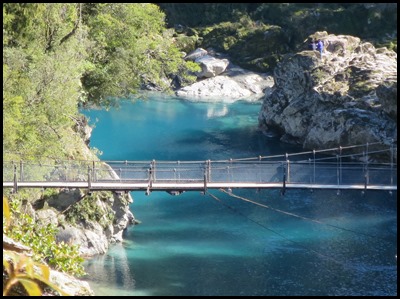 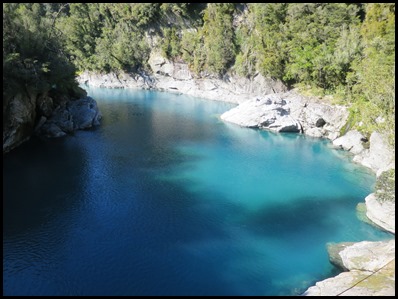 The water looking
left and right was almost an unreal shade of
blue.
 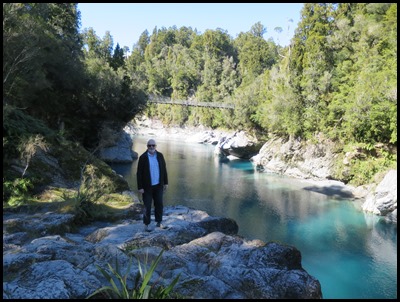 Across the bridge and
down to the river.
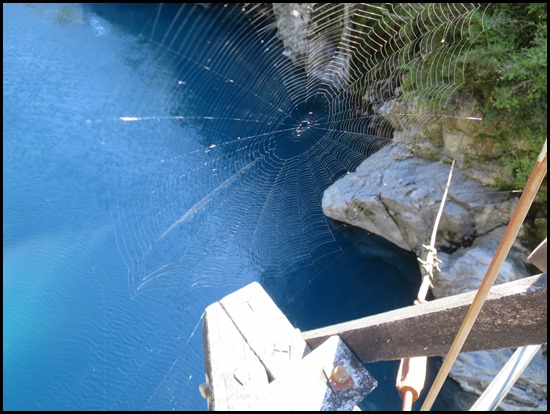 Back across the bridge we looked at
many spiders webs.
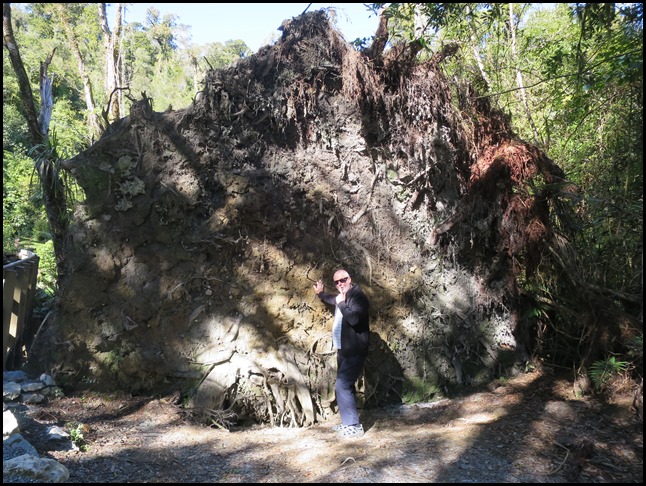 Bear is saying Oops. This massive tree fell
just inches from a wooden bridge – seen on the left, on our return
bimble. Back on
Mabel, our next stop was to see Dorothy Falls and Lake Kaniere. The route took
us on a slightly different route. What seemed to be in the middle of nowhere was
a large memorial. A must-stop to take a look.
 The Koiterangi Incident Memorial
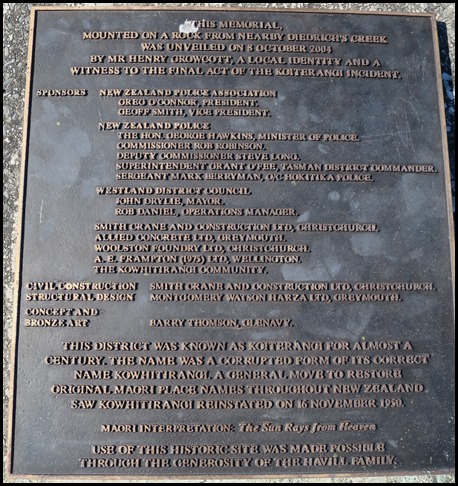 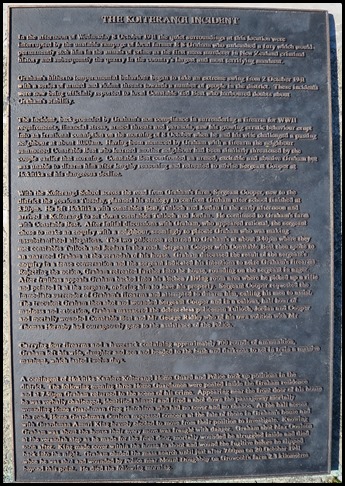 The plaque away
to the right was who unveiled, sponsors and the name of the
area, the plaque on the left has the most writing on of any
memorial we have ever seen. I have typed it out just as is:
In the afternoon of Wednesday 8
October 1941 the quiet surroundings at this location were interrupted by the
unstable rampage of local farmer E.S. Graham who unleashed a fury which would
permanently etch him in the annuls of crime as the first mass murderer in New
Zealand criminal history and subsequently the quarry in the country’s largest
and most terrifying manhunt.
Graham’s hitherto temperamental
behaviour began to take an extreme swing from 2 October 1941 with a series of
armed and violent threats towards a number of people in the district. These
incidents were now being officially reported to local Constable Ted Best who
harboured doubts about Graham’s stability.
The incident, backgrounded by
Graham’s non compliance in surrendering a firearm for WWII requirements,
financial stress, armed threats and paranoia, saw his growing erratic behaviour
erupt into an irrational conniption on the morning of 8 October when he and his
wife challenged a passing neighbour at about 10.00am. Having been menaced by
Graham with a firearm the neighbour summoned Constable Best who learned another
neighbour had been similarly threatened by the couple earlier that morning.
Constable Best confronted an armed, excitable and abusive Graham but was unable
to disarm him after lengthy reasoning and retreated to advise Sergeant Cooper at
Hokitika of his dangerous decline.
With the Koiterangi School across the
road from Graham’s farm, Sergeant Cooper, new to this district the previous
Tuesday, planned his strategy to confront Graham after school finished at
3.30pm. He left Hokitika with Constable Best, Tulloch and Jordon in the early
afternoon and arrived at Koiterangi to set down constables Tulloch and Jordan.
He continued to Graham’s farm with Constable Best. After initial discussions
with Graham, who appeared rational, the sergeant chose to make an enquiry with a
neighbour, seemingly to placate Graham who was making unsubstantiated
allegations. The two policemen returned to Graham’s at about 3.40pm where they
met Tulloch and Jordan in the road. Sergeant Cooper with Constable Best then
spoke to unarmed Graham at the verandah of his house. Graham discussed the
result of the sergeant’s enquiry in a tense conversation and the sergeant
indicated his intentions to seize Graham’s firearms. Rejecting the notion,
Graham retreated further into the house, rounding on the sergeant in anger.
After fruitless appeals Graham backed into his kitchen/living room area where he
picked up a rifle and pointed it at the sergeant, ordering him to leave his
property. Sergeant Cooper requested the immediate surrender of Graham’s firearms
and attempted to disarm him, calling his men to assist. The truculent Graham
then shot and wounded Sergeant Cooper in a callous, half hour of madness and
extortion, Graham massacred the defenceless policemen Tulloch, Jordon and Cooper
and mortally wounded Constable Best and Mr George Ridley who of his own volition
with Mr Thomas Hornsby had courageously gone to the assistance of the
Police.
Carrying four firearms and a
haversack containing approximately 700 rounds of ammunition, Graham left his
wife, daughter and son and headed to the bush and darkness to set in train a
massive manhunt, which lasted twelve days.
A contingent of
Hokitika-Kaniere-Koiterangi Home Guard and Police took up positions in the
district. The following evening three Home Guardsmen were posted inside the
Graham residence and at 7.50pm Graham returned to the scene of his crime.
Appearing near the front door of his home he was verbally challenged, identified
himself and fired a shot down the passageway mortally wounding Home Guardsman
Greg Hutchinson who had no cover and no chance. At the hall across the road,
Home Guardsman Coulson expressed concern at the fate of those in Graham’s house
and with Guardsman Amuri King bravely elected to move from their position to
investigate. Knowing Graham was about the house their every move was fraught
with danger. Graham shot Max Coulson at the verandah step as he made for the
front door, mortally wounded he struggled inside and died soon after. King made
cover within the house to shoot and wound the fugitive before he slipped back
into the night. Graham eluded the mass search until just after 7.00pm on 20
October 1941 when he was shot and wounded by Police near Mount Doughboy on
Crowcott’s farm 2.3 kilometres beyond this point. He died the following morning.
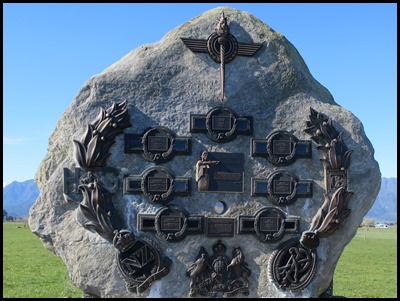 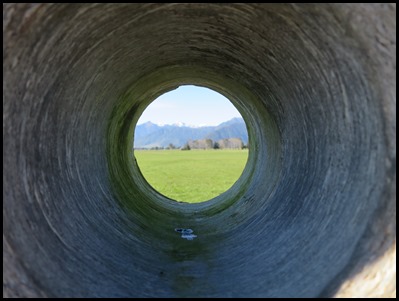 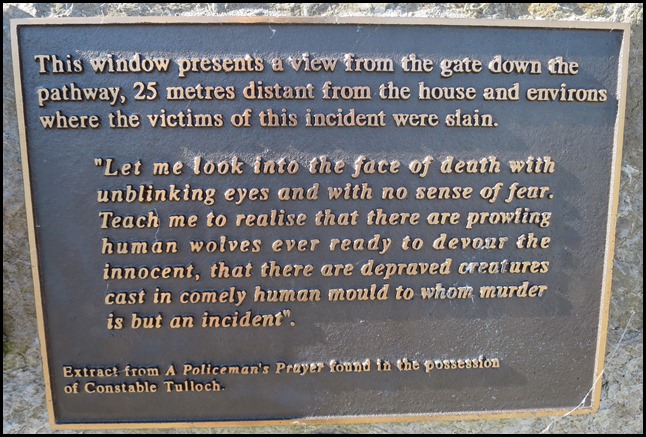 Very moving, very
sad.
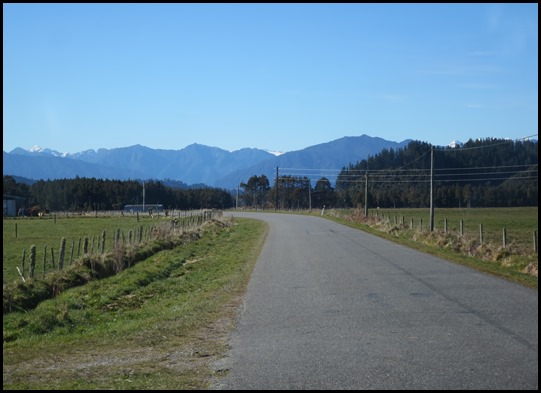 On our way once more.
ALL IN ALL QUITE A FIND
INTERESTING AND
SAD |